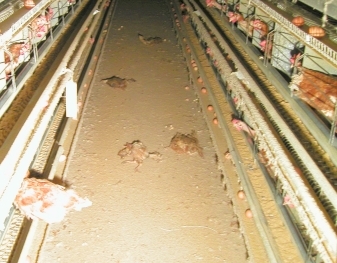How to Survive a Pandemic by Michael Greger
How to Survive a Pandemic by Michael Greger is essential reading for those who wish to understand the history of pandemics and how to minimise their impact on ourselves and our society. The book describes the causes of these diseases and most importantly, how to prevent these events from occurring.
The majority of infectious diseases (and all viral diseases) result from our interaction with animals. This book, with thousands of references, gives detailed descriptions of our greatest diseases from bubonic plague, smallpox, the deadly influenza of 1918 and the deadly viral diseases SARS, MERS and COVID-19.
Our collective memory of the horror of the 1918 influenza plague appears to be largely forgotten – the scale of it simply too large to comprehend even though it is only a century in the past.
We know already what causes these diseases. It is our livestock farming practices, particularly in the US with the refusal of livestock industry to acknowledge their role in propagating these deadly diseases which are transmitted by organisms such as Salmonella, Yersinia, Campylobacter, Listeria and Escherichia coli as well as the viral diseases influenza, SARS, MERS and COVID-19.
Poultry causes more deadly disease than all other animals combined with goats, sheep, camels, poultry, bars and fish being the main other source.
Most of these disease-causing bacteria are resistant to “one or more antibiotics and more than half of the samples of poultry bacteria are resistant to > 5 drugs!”
Many diseases have become resistant to antibiotics because of the routine administration of antibiotics to feedlot animals.
Infection with the poultry bacteria Campylobacter contaminates a quarter of chicken meat in the US with Guillain-Barré syndrome being one of the severe and deadly consequences. 2
Other potential life-threatening conditions include ulcerative colitis (inflammation and ulcers of the digestive system), arthritis, pneumonia and hemolytic-uremic syndrome (inflammation of the blood vessels of the kidneys).
According to the Centers for Disease Control and Prevention (CDC), Campylobacter is the most common cause of gastroenteritis. It is associated with over 800,000 – 1.5 million acute cases annually in the US with over 70 deaths. Common symptoms include bloody diarrhea, fever, cramps, nausea and vomiting. Most people recover but it can cause complications such as irritable bowel syndrome, paralysis, arthritis and life-threatening infection.
Instead of feeding livestock plant-based material, livestock are now fed slaughterhouse products containing blood, inedible organs, entrails and feces to save costs. Not only is it fed to other animals, it is also used to feed fish and fertilize plants. The ground-up remains of diseased animals, riddled with bacteria, viruses and environmental pollutants end up in our food and waterways.
The agricultural industry is well aware of this link but continues to deny as well as actively and aggressively fight for their right to continue these insidious but legal practices.
Prions are abnormal proteins. Prion diseases are incurable and untreatable. Prions diseases cannot be treated with antibiotics and are not destroyed by cooking. Mad cow disease is a fatal condition that resulted from the transmission of prions from contaminated sheep and cows in the 1980s. Hundreds of people have been killed by Creutzfeldt-Jakob disease (vCJD). Creutzfeldt–Jakob disease (subacute spongiform encephalopathy, another prion disease). Symptoms include memory loss, behavioral changes, poor coordination, visual disturbances, dementia, blindness, weakness, paralysis, coma and death. Approximately 70% of people die within a year of diagnosis.
Food safety regulation is much stronger in European countries. A greater deal of regulatory effort is expended in attempting to make our food supply safer by introducing much more stringent regulations to do with livestock farming practices and the supply of animal products by food produces.
Last updated on Tuesday 16 January 2024 at 14:34 by administrators






